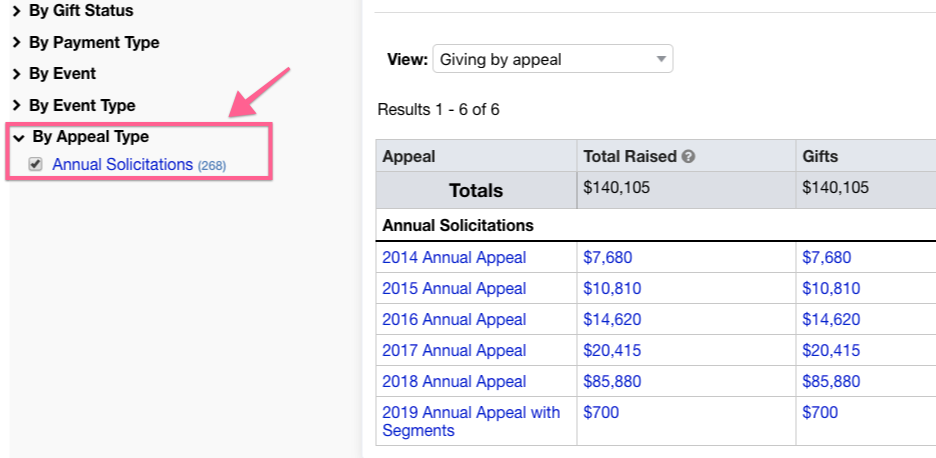Little Green Light is a cloud-based donor management system for fundraisers.
Subscribe to get our latest product updates, best practices and tips to grow your nonprofit.

Little Green Light includes a powerful Appeals feature, which, when used consistently, can be an incredibly effective tool in your fundraising toolbox. In this article, we share how using Appeals can help you set realistic fundraising goals, be more strategic in your solicitations, and meet or even exceed your fundraising goals.
The number one thing to remember is that you need to use the feature consistently to get the results. Let me tell you why…
When you use LGL’s Appeal feature consistently, over time you establish a history of who among your donors and prospective donors has been asked for what amount and how they’ve responded to each specific ask. You can then use that historical data to set realistic fundraising goals. Once you’ve set your goals, you can concentrate on your outreach strategy efforts, ultimately resulting in a more successful fundraising appeal.
Let’s take a look at that in a bit more depth.
Here are a few ways using your data can help you set realistic fundraising goals.
When you know what your average rate of response to your asks is, i.e., percentage of people asked who actually donated, you’ll have a good benchmark to use for your next solicitation.
With LGL’s updated Appeals Dashboard, it’s easy to see how many people have been asked and how many have donated to a specific appeal:

In this example, we can see that 50 constituents of the 96 we asked donated, resulting in a 52 percent response rate. Not too bad!
By reviewing your year-over-year results, you can identify trends and patterns to help you better predict this year’s outcomes.
You can easily view your year-over-year results using LGL’s Fundraising views and using Appeal Types to see just your annual solicitations:

Gift Pyramids can be another effective way to set realistic fundraising goals. By using the Gift tiers view on the LGL Fundraising tab, you can review how many gifts of each size your organization has received through your annual solicitations:

Now that you’ve determined your goals, let’s review some ways that using LGL Appeals can help you strategize your outreach efforts.
One of the greatest features in LGL Appeals is the ability to easily segment your asks. By doing so, you can be more personal in your outreach efforts. So, instead of asking everyone at your organization to support you in the same way or at the same level, you can take what you know about them and/or their preferences into account.
Let’s consider a very simple example of segmenting your list. Imagine that you have prospects or donors who prefer to give online rather than by mail. If you send a mailed solicitation with a remittance envelope to those who prefer to give online, your response rate will likely be low. If you instead create a segment in your appeal for those preferring to be emailed, not only will you be respecting their preferences, you’ll also have a great way to view results by that specific segment. That would be very helpful data to have!
For more ideas on ways to segment your data, learn how to identify the best donor prospects in your database.
One sure way to stay on track and meet your fundraising goals is to keep tabs on your progress during your solicitation period.
Here’s a quick way to see progress by segment in LGL:

This report can also be useful in helping you evaluate how your solicitation efforts are going and identifying what, if anything, needs to be tweaked.
Need some more ideas on how to evaluate your appeal? Check out these 4 key metrics.
Want to learn more about how to use LGL Appeals to better manage your solicitation efforts? Watch our free training webinar today.
Ready to try LGL? Get your first 30 days free. No credit card required.